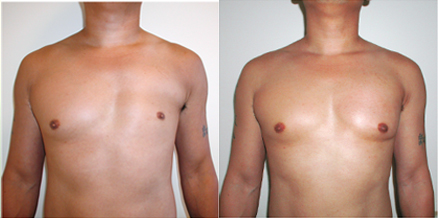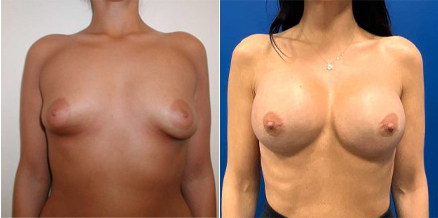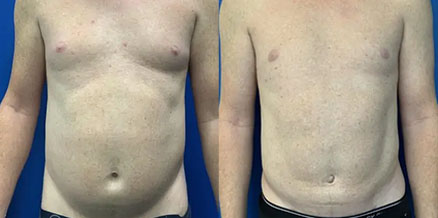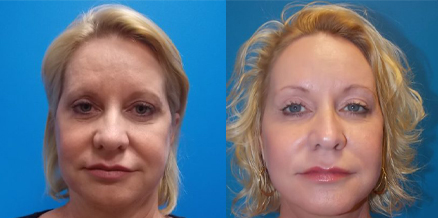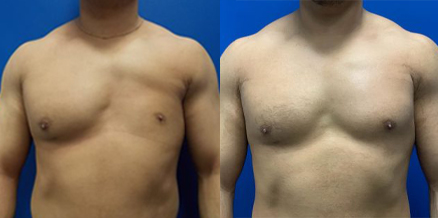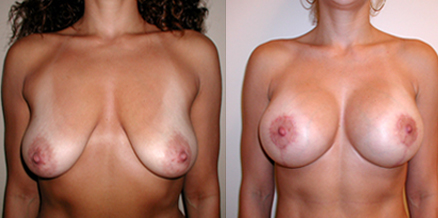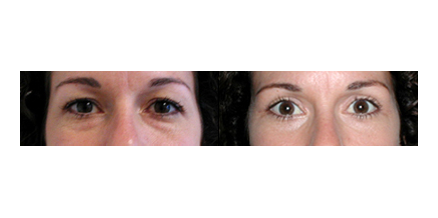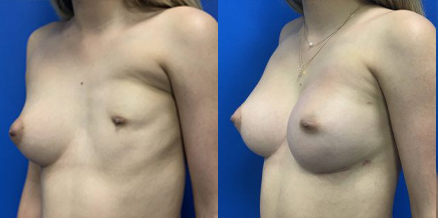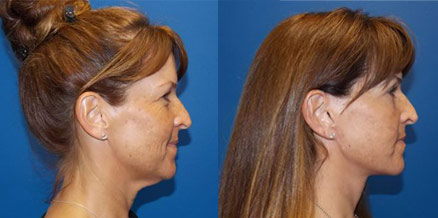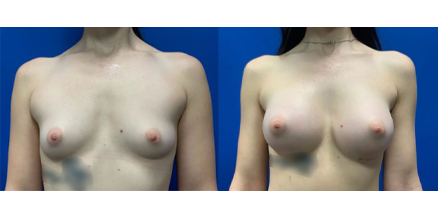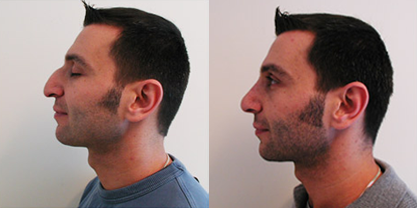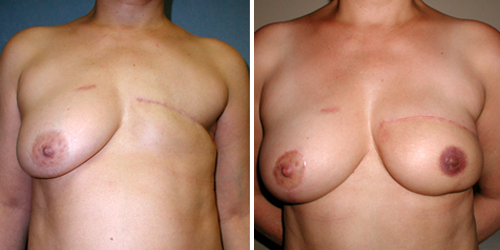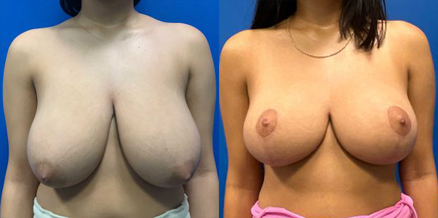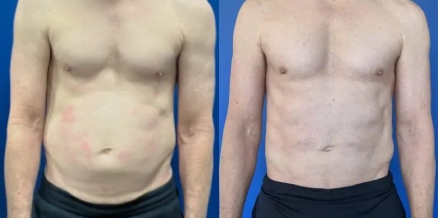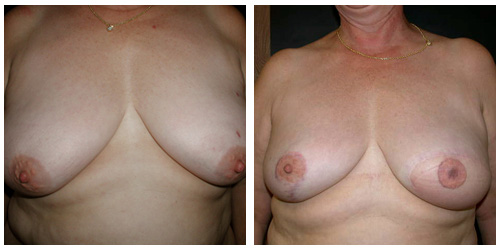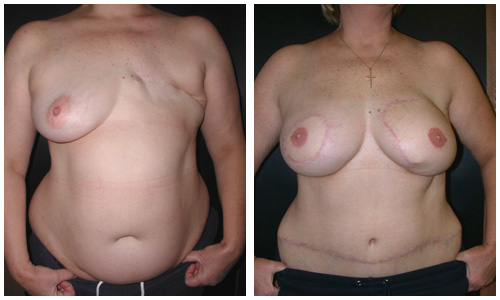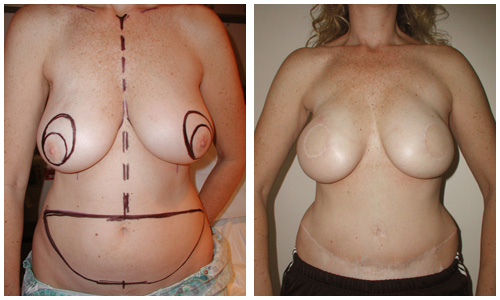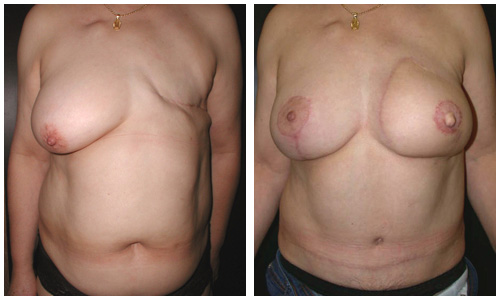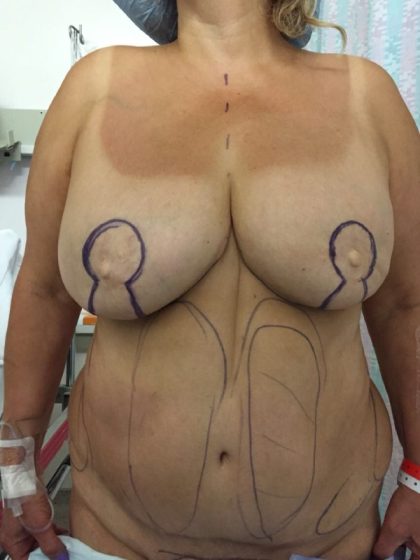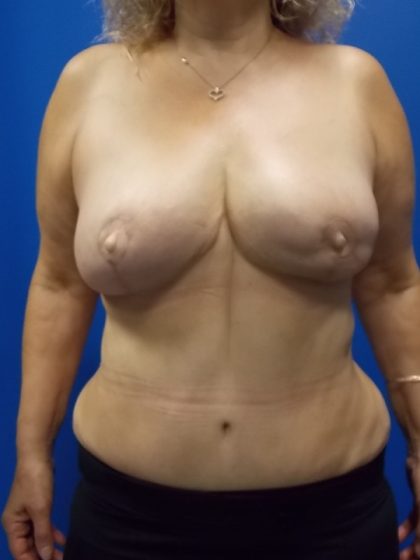Autologous Breast Reconstruction
Conveniently located to serve the areas of Beverly Hills, West Hollywood, Los Angeles and Pasadena, CA
Contents
Latissimus Flap Breast Reconstruction
In this procedure, the breast is reconstructed using tissue from the back along with an implant. An example of this would be the latissimus dorsi muscle flap procedure. There are several variations to the skin paddle shape and size and the location of the final incision on one’s back depending on personal preference and the extent of coverage needed.
Before and After Photos
View GalleryThe procedure can be done as a unilateral reconstruction or as a bilateral breast reconstruction. The reconstruction is based on the robust blood supply to the latissimus muscle and its overlying skin as it can be transposed from the back to the chest area. It is used when the abdomen is not available for a TRAM flap reconstruction, the patient is thin, or when a large amount of breast skin is removed due to the cancer being close to the skin, or if there are significant radiation burns to the skin. The procedure can be done at the same time as the mastectomy or in a delayed fashion.
TRAM Flap Breast Reconstruction
This method uses your own fatty tissue and skin from the lower abdomen without the need for an implant and with an added benefit of a full tummy tuck. When a patient qualifies to have the muscle-sparing free TRAM flap the lower abdominal fat and skin are used and transferred to the chest area and shaped into a new breast.
Before and After Photos
View GalleryUnlike most TRAM flap reconstructions; this operation does not remove the whole length of the muscle but only a small portion where the blood supply to the overlying fatty tissue and skin is present. This area of the lower abdominal fat and skin is then transferred with the use of microsurgery to the chest area and shaped into a breast. This optimizes the circulation to the newly reconstructed breast, while minimizing the amount of muscle removed from the abdomen which minimizes the chances of a future abdominal wall muscle weakness or bulging. The free TRAM technique is specially used in younger, physically active patients and those who need bilateral breast reconstruction.
Due to this better blood supply, the flap that is transferred to the chest can be shaped and contoured to best match the opposite breast. The newly reconstructed breast often has a more youthful or uplifted appearance such that many women request a reshape or lift of the opposite breast. Any type of symmetrizing procedure to the opposite breast including insertion of implants in a patient with a history of breast cancer is considered a reconstructive procedure and not cosmetic with respect to federal and Medicare reimbursement guidelines.
Local Flap Breast Reconstruction
Local flap refers to soft tissues that are within the vicinity of the breast of concern that can be rearranged, advanced, moved in various directions, or repositioned to achieve a better breast contour and symmetry after breast lumpectomy. It is commonly used when the whole breast is not removed as part of the breast cancer operation, but only a portion of the breast is removed. It is more common to find breast asymmetry and contour deformities when a lumpectomy is performed with radiation as the long-term effects of the radiation do cause shrinkage of the breast tissue resulting in breast asymmetry.
Before and After Photos
The techniques employed to correct breast asymmetry with local flaps may also include fat grafting, reverse abdominoplasty to recruit tissues into the lower breast region, and other creative procedures that do not entail a transfer of whole tissues from one part of the body to another as we do in latissimus flap or TRAM flap breast reconstructions.

